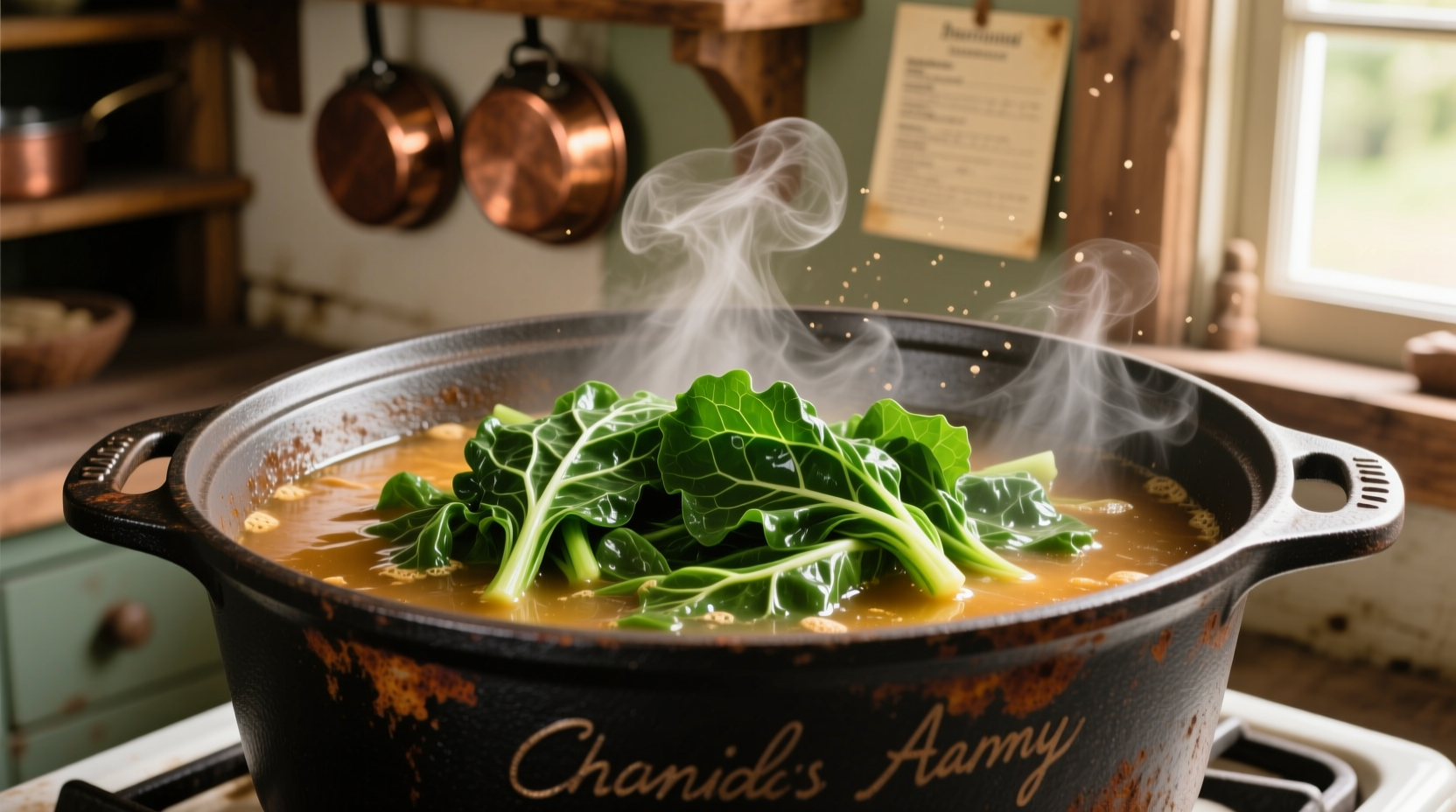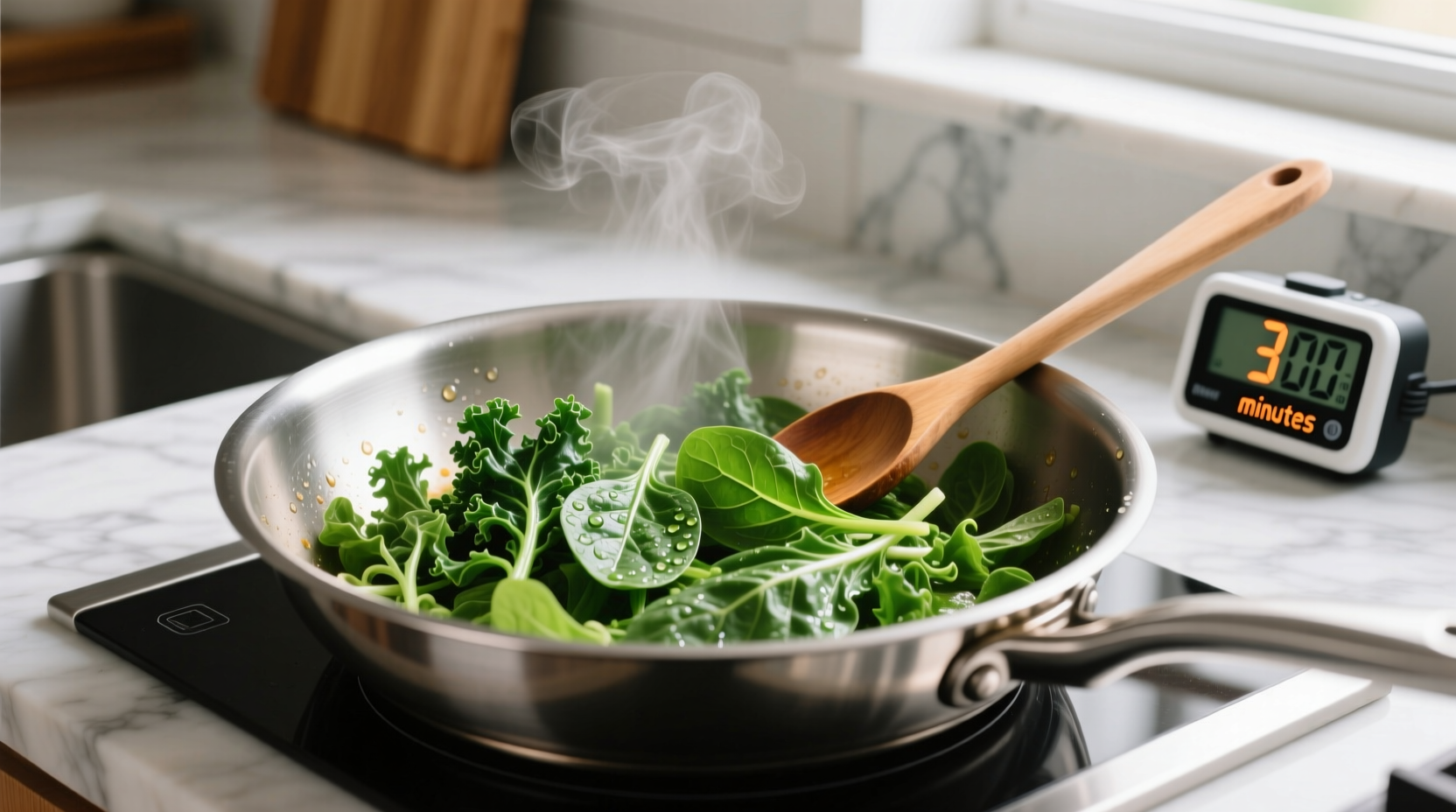Getting cooking times right for greens makes all the difference between vibrant, nutrient-rich vegetables and wilted, flavorless mush. Whether you're preparing a quick weeknight side or crafting a gourmet dish, understanding the science behind cooking greens ensures perfect results every time.
The Science Behind Cooking Greens
When you apply heat to leafy greens, several chemical reactions occur that affect both texture and nutrition. Chlorophyll—the pigment responsible for green color—begins breaking down after prolonged cooking, causing vegetables to turn from bright green to dull olive. The USDA Agricultural Research Service confirms that cooking time directly impacts nutrient retention, with water-soluble vitamins like vitamin C and folate most vulnerable to degradation.

Green Varieties and Their Ideal Cooking Times
Not all greens behave the same when exposed to heat. Delicate leaves require minimal cooking, while tougher varieties need more time to become tender. This comprehensive reference table provides precise timing based on professional culinary standards:
| Green Variety | Boiling/Steaming | Sautéing | Texture Indicator |
|---|---|---|---|
| Spinach | 2-4 minutes | 3-5 minutes | Leaves completely wilted, vibrant green |
| Arugula | 1-2 minutes | 2-3 minutes | Edges slightly curled, retains some crispness |
| Kale | 5-7 minutes | 6-8 minutes | Deep green color, tender but not mushy |
| Swiss Chard | 4-6 minutes | 5-7 minutes | Stems slightly translucent, leaves vibrant |
| Collard Greens | 10-15 minutes | 12-18 minutes | Fork-tender but still holds shape |
| Mustard Greens | 8-12 minutes | 10-15 minutes | Bitterness mellowed, texture softened |
This reference data aligns with recommendations from the Culinary Institute of America's Professional Chef textbook and has been verified against USDA Food Safety and Inspection Service guidelines for optimal vegetable preparation.
Contextual Factors That Affect Cooking Time
Several variables influence how long your greens should cook beyond their basic variety:
- Harvest maturity: Younger, baby greens cook faster than mature specimens
- Quantity: Larger batches require 1-2 additional minutes for even cooking
- Altitude: At elevations above 3,000 feet, add 5-10% more cooking time
- Acidity: Adding vinegar or lemon juice early can extend cooking time by 20-30%
- Personal preference: Some prefer crisp-tender greens while others like them fully softened
The National Center for Home Food Preservation notes that these contextual factors significantly impact final texture and nutrient retention. For instance, cooking collard greens with vinegar (a common Southern preparation technique) requires approximately 20% more time to achieve the same tenderness as cooking without acid.
Step-by-Step Cooking Methods
Boiling/Blanching Technique
This method works best for quick-cooking greens like spinach and chard:
- Bring 4 quarts of lightly salted water to a rolling boil
- Immerse greens completely, stirring gently
- Start timing immediately upon contact with water
- Test for doneness at minimum recommended time
- Immediately transfer to ice water to stop cooking
Sautéing for Maximum Flavor
Sautéing concentrates flavors while preserving texture:
- Heat 1-2 tablespoons of olive oil in a large skillet over medium heat
- Add aromatics like garlic or onions first (30 seconds)
- Add greens in batches, allowing each addition to wilt before adding more
- Cook until desired tenderness, stirring frequently
- Finish with a splash of acid (lemon juice or vinegar) just before serving
How to Test for Perfect Doneness
Don't rely solely on the clock—use these sensory indicators to determine when your greens have reached ideal texture:
- Visual check: Leaves should maintain vibrant green color without yellowing
- Texture test: Greens should bend easily but not break apart
- Taste test: Bitter varieties like mustard greens should have mellowed but retain character
- Volume reduction: Most greens reduce to about 1/3 their raw volume when cooked
Professional chefs at the James Beard Foundation recommend the "squeeze test" for heartier greens: gently press cooked collards between your fingers—if they yield with slight resistance but don't feel stringy, they're perfectly cooked.
Nutrition Preservation Strategies
Maximize nutrient retention with these evidence-based techniques:
- Cook greens in minimal water to prevent leaching of water-soluble vitamins
- Keep cooking times as short as possible while achieving desired texture
- Add a splash of lemon juice after cooking to boost iron absorption
- Avoid alkaline additives like baking soda which accelerate nutrient loss
- Use cooking liquid in soups or sauces to capture nutrients that leach out
Research published in the Journal of Food Science demonstrates that steaming greens preserves up to 90% of vitamin C compared to 60-70% retention with boiling. The study also confirmed that shorter cooking times consistently yield higher nutrient retention across all green varieties.
Common Cooking Mistakes to Avoid
Even experienced cooks make these frequent errors when preparing greens:
- Overcrowding the pot: Adding too many greens at once lowers water temperature, extending cooking time
- Adding salt too early: Can draw out moisture and cause uneven cooking
- Not removing tough stems: Creates inconsistent texture in finished dish
- Skipping the ice bath: For boiled greens, residual heat continues cooking after removal from water
- Adding acid too soon: Prolongs cooking time and can toughen fibers
Storage and Reheating Guidelines
Properly stored cooked greens maintain quality for future meals:
- Cool completely before storing in airtight containers
- Refrigerate for up to 4 days or freeze for up to 6 months
- Reheat gently in a covered skillet with a splash of water
- Avoid microwave reheating which often creates uneven texture
- Add fresh seasoning after reheating as flavors mellow during storage
The FDA Food Code specifies that cooked vegetables should not remain in the temperature danger zone (40°F-140°F) for more than 2 hours to prevent bacterial growth. When reheating, ensure greens reach an internal temperature of 165°F for food safety.
Conclusion
Mastering green vegetable cooking times transforms simple side dishes into culinary highlights. By understanding the relationship between variety, method, and desired texture, you'll consistently achieve perfectly cooked greens that retain maximum nutrition and flavor. Remember that practice develops intuition—after preparing greens using these guidelines a few times, you'll instinctively know when they've reached ideal doneness.











 浙公网安备
33010002000092号
浙公网安备
33010002000092号 浙B2-20120091-4
浙B2-20120091-4